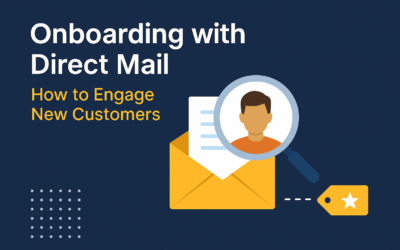It used to be that personalizing your marketing, whether digitally or in print, was something that made you stand out. It was something your competitors weren’t doing, so your customers and prospects took notice. Today, personalization has become expected so that people notice if you are not personalizing. If you send stuff that isn’t relevant, they don’t read it. Good personalization isn’t always obvious to the customer. The offers and messaging may be tailored to them but it may not be overt. Today, the absence of personalization can actually be a negative differentiator.
If you are still sending static mail pieces, you’re competing with marketers who are tailoring the messaging and whole experience on a one-to-one level with their customers and prospects.
The good news is that it’s never too late to get started. Even with a simple basic customer list, you can create personalized pieces that are highly effective. Let’s take a look at three impactful but straightforward strategies.
1. Tailor your offers to different segments
Sending the same rich offers out to your customers that you do your prospects will cannibalize your margins and have a negative effect. At the same time, sending a blanket offer to all of your customers, will generate lower response and ROI than sending custom offers based on purchasing habits. For example, if you send a dog food coupon to your entire list, a cat owner wouldn’t respond. Instead, you can create different versions and present the relevant offer based on which segment your customer is in.
2. Use different imagery depending on the audience
As an example, let’s suppose a building supplier does business across the country. Landscapes vary by geography and the types of homes and applications don’t look the same. You wouldn’t send a picture of a log cabin to someone in San Diego or desert landscape to someone in Maine. Imagery can be changed out just like offers to different segments of your audience in the same campaign. Pictures capture people’s attention so use this as a way to relate to your audience.
3. Add new, fresh variables.
Determine which variables you don’t have, but that would be helpful in your marketing, and add them. List companies allow you to append demographic variables like age, home ownership, presence of children, or household income and many other factors for the names you already have. This doesn’t have to be expensive, and it can enhance your ability to market relevantly and boost your marketing effectiveness.



